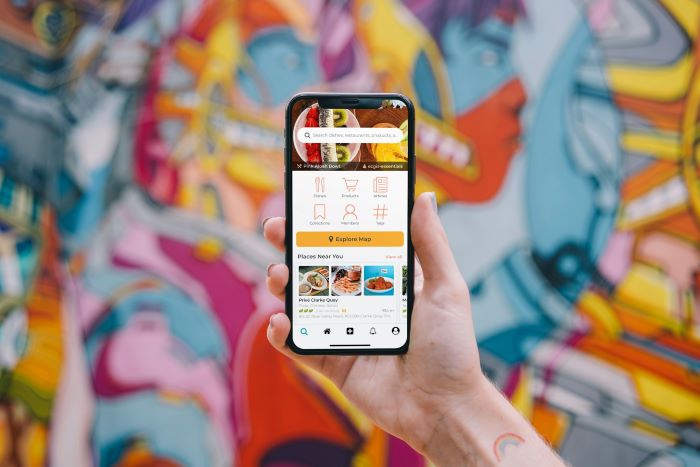Leveraging Mobile User Flows to Boost E-Commerce Success

In the highly competitive world of e-commerce, a well-designed mobile user flow can make all the difference when it comes to driving sales and conversions. With more and more consumers turning to their mobile devices for online shopping, creating a seamless and intuitive user experience is essential for success.
By leveraging mobile user flows effectively, e-commerce businesses can not only attract customers but also keep them engaged and satisfied throughout their journey on the website. In this blog post, we will explore how design plays a crucial role in optimizing mobile user flows to boost e-commerce success.
1. The Power of Simplicity in Mobile User Flows
Simplicity is a key design principle that can greatly impact the success of an e-commerce website’s mobile user flow. By keeping the user interface clean and uncluttered, customers are able to navigate through the site with ease and find what they are looking for quickly.
Simplified design elements such as clear navigation menus, easy-to-read text, and intuitive buttons can help streamline the shopping experience and encourage users to make purchases. For instance, the clothing retailer, Everlane, implemented a simple mobile user flow on their e-commerce website. By incorporating clear navigation menus, minimalist design elements, and easy-to-read product descriptions, Everlane enhanced the shopping experience for customers. As a result, their conversion rates increased by 20% within the first month of implementing the new design.
In essence, a simple and straightforward mobile user flow not only reduces friction but also enhances overall user satisfaction, leading to higher conversion rates for e-commerce businesses.
2. Optimizing Speed in Mobile User Flows
Speed is crucial in the world of e-commerce, especially on mobile devices where users expect instant access to information and fast-loading pages. From a design perspective, several strategies can be implemented to increase the speed of a mobile user flow. Minimizing the use of large images and unnecessary animations can help reduce page load times, improving overall performance.
Implementing lazy loading techniques for images and content can also help prioritize loading critical elements first, allowing users to start interacting with the site sooner. Additionally, optimizing code and reducing unnecessary scripts can further enhance load times and create a smoother user experience.
Furthermore, utilizing caching mechanisms and content delivery networks (CDNs) can help reduce latency and deliver content more efficiently to users across different geographical locations. By focusing on speed optimization in the design of mobile user flows, e-commerce businesses can provide a seamless shopping experience that keeps customers engaged and satisfied.
3. Personalization and Customization in Mobile Shopping Apps
Personalization and customization play a significant role in enhancing the user experience within mobile shopping apps. By tailoring product recommendations, offers, and content based on user preferences and behavior, e-commerce businesses can create a more personalized and engaging shopping experience for their customers. From recommending products based on past purchases to offering personalized discounts or promotions, customization features can help increase customer loyalty and drive repeat purchases.
One notable case study showcasing the power of personalization is Amazon’s recommendation engine. By analyzing user data, such as browsing history, search queries, and purchase patterns, Amazon provides highly tailored product recommendations to its customers. This level of personalization has significantly contributed to Amazon’s success in increasing sales and customer satisfaction.
By designing a user flow for mobile that not only incorporates customizable features such as wish lists and saved items but also caters to personal needs and preferences through personalized product suggestions, it becomes much easier to improve the overall product experience and also drive e-commerce success
4. The Impact of Intuitive Design on Converting Browsers into Buyers
Intuitive design plays a crucial role in converting browsers into buyers within the realm of e-commerce. A well-designed and intuitive user interface can guide users seamlessly through the shopping process, making it easy for them to find products, add items to their cart, and complete the checkout process. By incorporating clear calls-to-action, simple navigation menus, and easily accessible product information, e-commerce websites can enhance user engagement and encourage conversion.
One effective way to convert browsers into buyers is by implementing a streamlined checkout process. By minimizing the number of steps required to make a purchase and providing multiple payment options, businesses can reduce friction and increase the likelihood of completing a transaction. Additionally, incorporating user-friendly features such as guest checkout options, saved payment details, and order tracking capabilities can further enhance the shopping experience and boost conversion rates.
Overall, intuitive design not only improves usability but also instills trust and confidence in users, ultimately leading to higher conversion rates and increased e-commerce success.
Conclusion
Leveraging mobile user flows with a focus on simplicity, speed optimization, personalization, and intuitive design is essential for e-commerce success in today’s competitive landscape. By prioritizing these design principles and strategies, businesses can create a seamless and engaging shopping experience for customers, ultimately driving conversions and fostering long-term loyalty.
Embracing user-centric design not only enhances the overall usability of an e-commerce website but also sets the foundation for sustainable growth and success in the digital marketplace.















